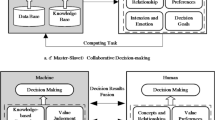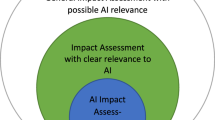Abstract
With the recent advances in Internet and mobile technologies, there are increasing demands for ubiquitous access to food safety information for service integration and gathering first hand information. However, due to disparate food trading information among different food suppliers throughout the food supply chain such as food importers, food wholesalers, food retailers, it is still difficult for citizens to use them effectively during their marketplace shopping. To overcome this problem, we propose a Collaborative Food Safety Agent System (CFSAS) based on a scalable, flexible, and intelligent Multi-Agent Information System (MAIS) architecture for proactive aids and trust-based decision support on food purchasing to citizens. We formulate our MAIS architecture for CFSAS further with agent clusters based on a case study of the Center for Food Safety (CFS) in Hong Kong. Agent clusters may comprise several types of agents to achieve the goals involved in the major processes of a food safety mechanism. We show how agents help citizens better plan, understand, and specify their preferences collaboratively with the CFSAS. We further illustrate how this can be implemented with Web service technologies to integrate disparate food information resources along the food supply chain.





Similar content being viewed by others
References
Abdul-Rahman, A., & Hailes, S. (2000). Supporting trust in virtual communities. In Proceedings Hawaii International Conference on System Sciences 33, Maui, Hawaii, 4–7 January 2000.
Chiu, D. K. W., Cheung, S. C., Kafeza, E., & Leung, H.-F. (2003). A three-tier view methodology for adapting M-services. IEEE Transactions on System, Man and Cybernetics, Part A, 33(6), 725–741.
Chiu, D. K. W., Cheung, S. C., Hung, P. C. K., & Leung, H.-F. (2004). Constraint-based negotiation in a multi-agent information system with multiple platform Support. In Proceedings of the 37th Hawaiian International Conference on System Science, Big Island, Hawaii, IEEE Computer Society press, CDROM, 10 pages.
Chiu, D. K. W., Cheung, S. C., & Leung, H.-F. (2005). A multi-agent infrastructure for mobile workforce management in a service oriented enterprise. In Proceedings of the 37th Hawaiian International Conference on System Science, Big Island, Hawaii, IEEE Computer Society press, CDROM, 10 pages.
Chiu, D. K. W., Hong, D., Shen, Y. V., Cheung, S. C., & Kafeza, E. (2007). Ubiquitous enterprise service adaptations based on contextual user behavior. Information Systems Frontier, 9(4), 343–358.
Chiu, D. K. W., Leung, H. F., & Lam, K. M. (2009a). On the making of service recommendations: an action theory based on utility, reputation, and risk attitude. Expert Systems with Applications, 36(2), 3293–3301.
Chiu, D. K. W., Lin, D. T. T., Kafeza, E., Wang, M., Hu, H., Hu, H., & Zhuang, Y. (2009b). Alert based disaster notification and resource allocation. Information Systems Frontier, 12(1), 29–47.
Chiu, D. K. W., Yueh, Y. T. F., Leung, H.-F., & Hung, P. C. K. (2009c). Towards ubiquitous tourist service coordination and process integration: a collaborative travel agent system with semantic web services. Information Systems Frontier, 11(3), 241–256.
Fensel, D., McGuiness, D. L., Schulten, E., Ng, W. K., Lim, E. P., & Yan, G. (2001). Ontologies and electronic commerce. IEEE Intelligent Systems, 16(1), 8–14.
Fraile, J.-C., Paredis, C. J. J., Wang, C.-H., & Khosla, P. K. (1999). Agent-based planning and control of a multi-manipulator assembly system. In Proceedings of the IEEE International Conference on Robotics and Automation, 2, 1219–1225.
Gerst, M. H. (2003). The role of standardisation in the context of E-collaboration: ASNAP shot. In Proceedings of the 3rd Conference on Standardization and Innovation in Information Technology, 113–119.
Grocery Manufacturers Association (GMA) & Kearney, A. T. (2010). Consumer product fraud: Deterrence and detection. Available at: http://www.gmaonline.org/downloads/wygwam/consumerproductfraud.pdf.
He, M., Jennings, N. R., & Leung, H.-F. (2003). On agent-mediated electronic commerce. IEEE Transactions on Knowledge and Data Engineering, 15(4), 985–1003.
Kafeza, E., Chiu, D. K. W., Cheung, S. C., & Kafeza, M. (2004). Alerts in mobile healthcare applications: requirements and pilot study. IEEE Transactions on Information Technology in Biomedicine, 8(2), 173–181.
Lai, W. W. K., & Ng, K. W. (2005). A time-frame based trust model for grids. Proceeding of the 4th Grid and Cooperative Computing (GCC 2005), 190–195.
Lin, Y.-B., & Chlamtac, I. (2000). Wireless and mobile network architectures. New York: Wiley.
Lin, F.-R., & Pai, Y.-H. (2000). Using multi-agent simulation and learning to design new business processes. In IEEE Transactions on System, Man and Cybernetics, Part A, 30, 3, 380–384.
Lin, F.-R., Tan, G. W., & Shaw, M. J. (1998). Modeling supply-chain networks by a multi-agent system. In Proceedings of the 31th Hawaiian International Conference on System Science, Kohala Coast, Hawaii, 5, 105–114.
Lo, G., & Kersten, G. K. (1998). Negotiation in electronic commerce: Integrating negotiation support and software agent technologies. In Proceedings of the 29th Atlantic Schools of Business Conference.
Luo, Y., Liu, K., & Davis, D. N. (2002). A multi-agent decision support system for stock trading. IEEE Network, 16(1), 20–27.
Lyytinen, K., & Yoo, Y. (2002). Research commentary: the next wave of nomadic computing. Information Systems Research, 13(4), 377–388.
Shakshuki, E., Ghenniwa, H. & Kamel, M. (2000). A multi-agent system architecture for information gathering. In Proceedings of the 11th International Workshop on Database and Expert Systems Applications, Los Alamitos, CA, USA, 732–736.
Sycara, K., & Zeng, D. (1996). Coordination of multiple intelligent software agents. International Journal of Cooperative Information Systems, 5, 2–3.
Acknowledgments
This work is partially supported by the National Natural Science Foundation of China under Grant No. 61100017.
Author information
Authors and Affiliations
Corresponding author
Rights and permissions
About this article
Cite this article
Lai, W.W.K., Chiu, D.K.W. & Feng, Z. A collaborative food safety service agent architecture with alerts and trust. Inf Syst Front 15, 599–612 (2013). https://doi.org/10.1007/s10796-012-9382-9
Published:
Issue Date:
DOI: https://doi.org/10.1007/s10796-012-9382-9




